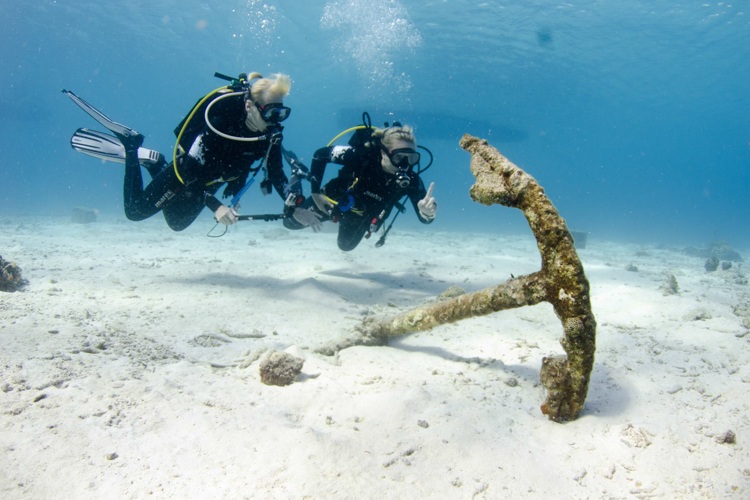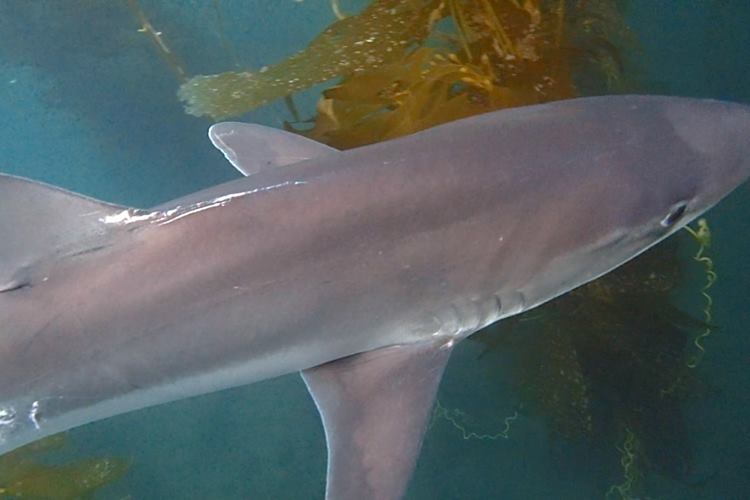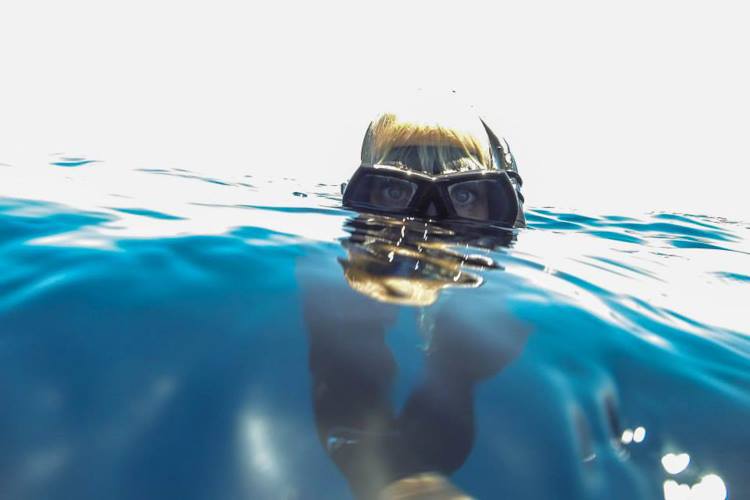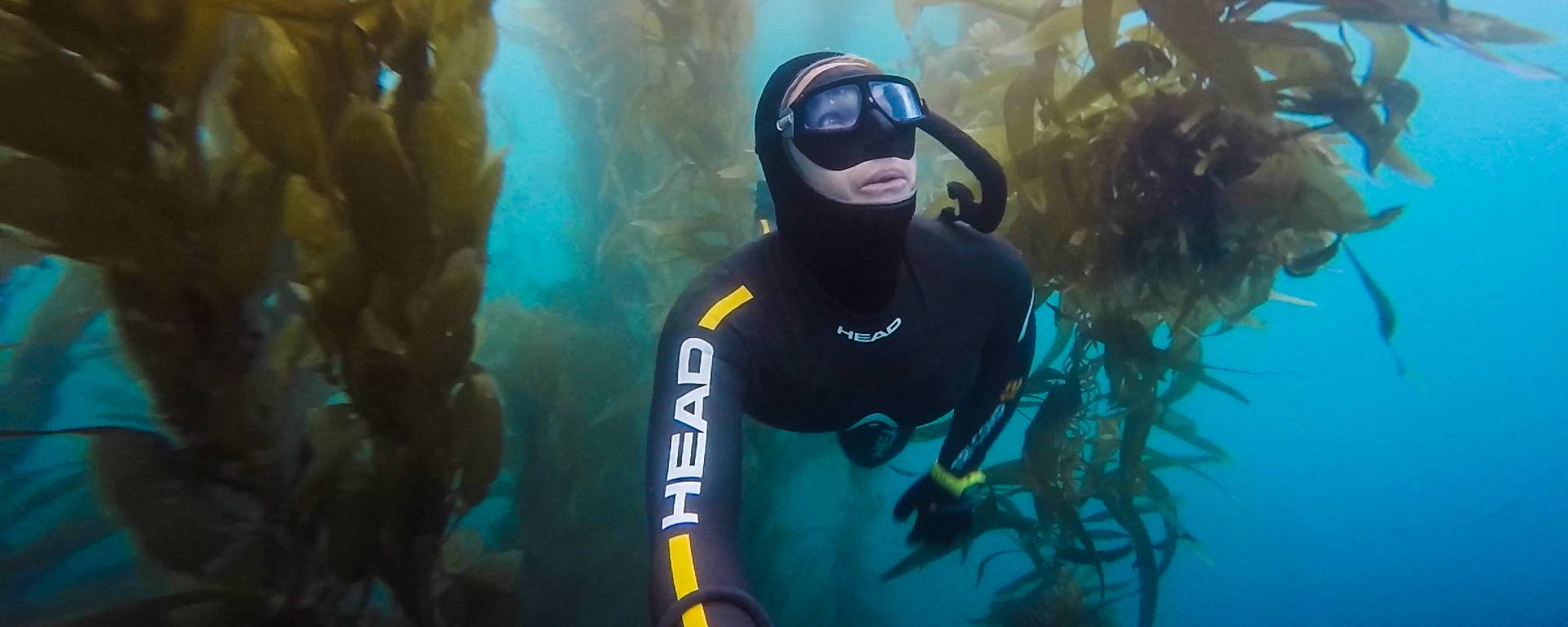
Top 3 San Diego Kelp Forests for Diving
Diving some of the earth’s most magnificent giant kelp forests is only minutes from San Diego. A rich underwater ecosystem, kelp beds, thrive with a massive variety of plant and animal life. With more than 800 species, divers can often see sharks, seals, turtles and thousands of fish all at a single site. One of the fastest growing plants in the world the giant kelp will grow over 2 feet in a day to a height of over 100 feet tall. Here we list the best kelp forests sites for scuba diving from San Diego to La Jolla and what is unique in each area.
#1 Boomers’ Giant Kelp Forest
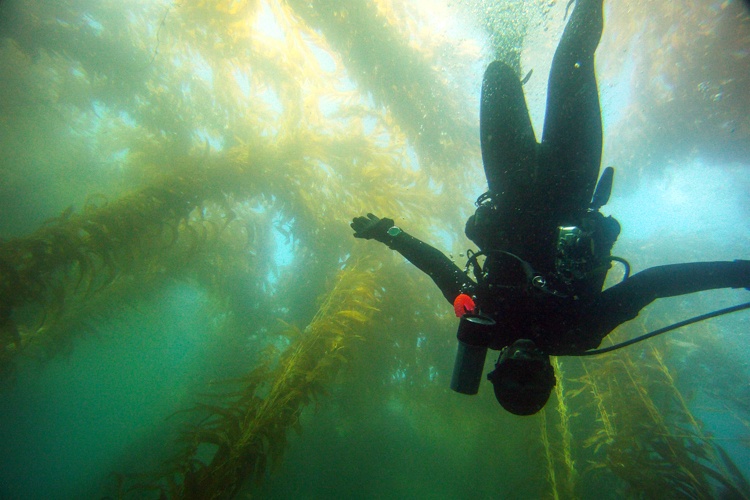
The most beautiful spot to kelp dive in San Diego is the Boomers’ kelp forest. The giant kelp dominates this area located south of the protected marine sanctuary. It is easiest to enter the ocean from the beach at La Jolla Cove and then head around the point to the west and Boomers. The densest areas of the forest with the most sea life are no more than 200 yards offshore in 25 to 60 feet of water. Keep a lookout for California spiny lobster hiding under rocks or in the holdfasts. Be alert, the areas underwater rocky channels are a favorite place for harbor seals to grab dive fins. This site can be hazardous when there is large surf.
#2 Rock Pile at La Jolla Cove
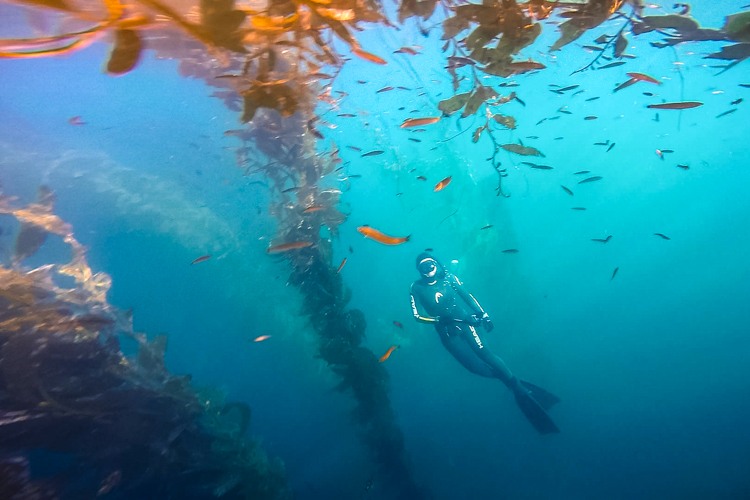
Another epic kelp dive is at Rock Pile on the west end of the La Jolla Ecological Reserve. Check out our morning 2-tank group dive. Enter at La Jolla Cove beach and head about 300 yards straight out from the steps to the edge of the giant kelp forest. The site is 30 to 60 feet deep in most areas. Diving to the north and the sandy ocean floor becomes rocky and the forest denser. Look for warty sea cucumbers, sea fans, giant spined sea stars and big white sheep crabs on the rocks. Head east to shallower depths and into the thick feather boa kelp. The area is a typical spot to see some of the larger tope sharks or the prehistoric sevengill sharks.
#3 Point Loma Kelp Beds
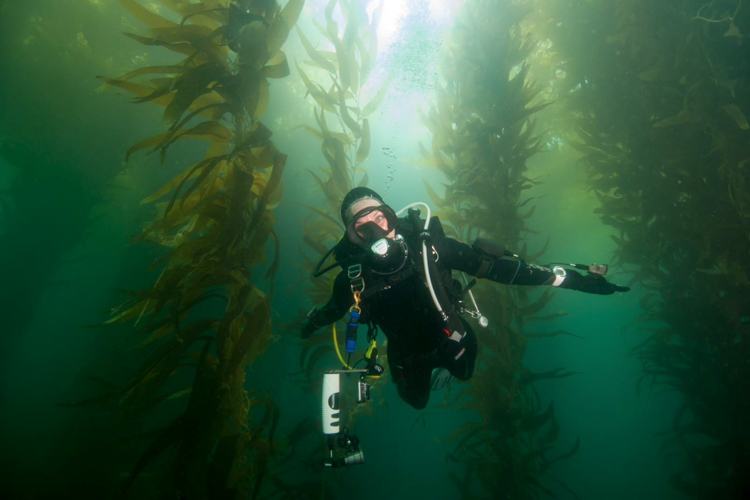
Another local kelp bed runs along the coast of Point Loma all the way to the Cabrillo National Monument. This locations forest is pretty big with lots of marine life and a variety of species of kelp. Diving depths range from shallow rocky reef to areas that are quite deep. The most common way to access this area is with the commercial dive boats out of Quivira Basin.
More Ways to Explore the Kelp | Snorkeling & Kayaking
Are you visiting San Diego or a local explorer looking to see the kelp? There are more ways to explore our giant kelp forests than by scuba diving. It takes kayakers under 30 minutes to paddle for the La Jolla Boat Launch to Rock Pile or Boomers’ kelp forests. Try snorkeling! Strong snorkelers can also reach these two premier kelp beds by entering at La Jolla Cove beach.
As the kelp reaches the surface, it flowers into a thick canopy that you may have to snorkel or paddle through. Traversing through the canopy can be tricky, be sure you are with a local expert. From the surface, you may see schooling sardines or anchovies. On clear days the orange California state fish, the Garibaldi, be a will stand out. Be ready, out local seals love to nibble on light colored snorkeling fins or kayak paddles.
Sea Life in Our Kelp Forests
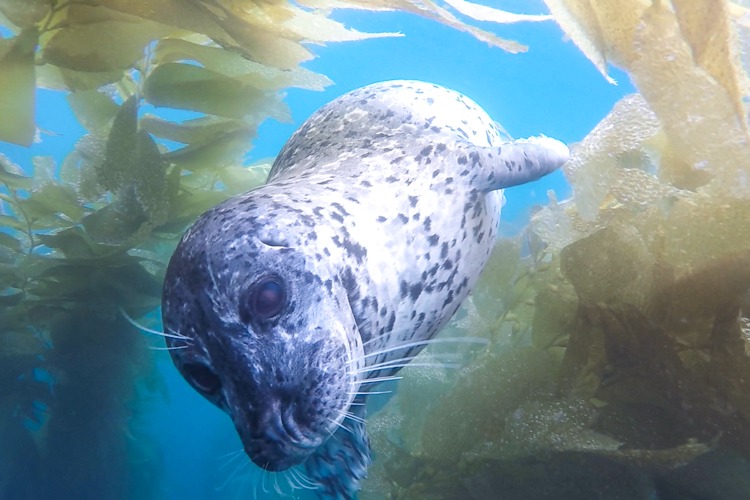
A staggering number of species live in the kelp forests off the coast of San Diego. Aquatic mammals such as whales, seals, sea lions and dolphins frequent the kelp for food. These mammals also use the vast, dense forests as shelter from storms and as a place to hide from predators.
If you are scuba diving and exploring our kelp forests, you will find tons of life along the ocean floor. Attached to rocks look for red abalone, scallops and aggregating or strawberry anemone. Hiding below the rock piles is spiny lobster, rockfish, and even two-spot octopus. Horn sharks, bat rays, and guitarfish seek out low ledges to hide under for a quick nap.
Look up and see the sun’s rays filter through the kelp canopy creating a magical world of light below. Keep an eye out for large groups of kelp bass and sargo fish floating in the leaves. Other species in the kelp are giant black sea bass, blue sharks, tuna and California barracuda.
Near the top of the kelp forest, you will often see large numbers of top smelt and Pacific mackerel. Keep your camera ready; you never know when a harbor seal will pop it’s head up to say hello!
Great Facts & Tips about San Diego’s Kelp Forests
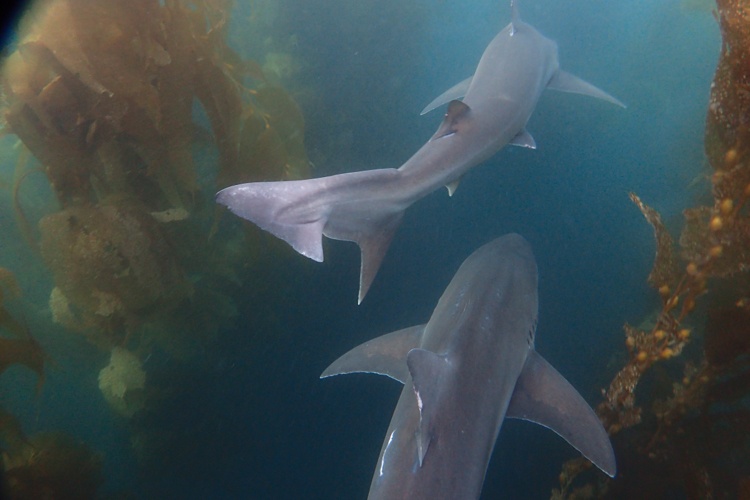
- Kelp is massive brown algae, not a plant species.
- Anchored to the ocean floor by holdfasts attached to rocks, the kelp does not have roots.
- With small bladder like bulbs attached the stalks extend up from the seafloor toward the sun.
- On the ocean surface, the stalks flower into a thick canopy that rests and rolls on the waves.
- The giant kelp thrives in San Diego with cold, nutrient-rich, coastal waters and lots of sunlight.
- San Diego has some of the most photographed kelp forests in the world, be sure to bring your camera.
